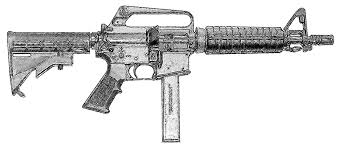The Impact of the National Firearms Act on Firearm Innovation
The National Firearms Act (NFA) of 1934 shows among the earliest efforts by america federal government to regulate firearms. Enacted in reaction on the proliferation of gang abuse throughout the Prohibition period, the NFA imposes stringent regulations on a number of categories of firearms. Here’s a closer look on the effect from the NFA on weapon management:
Limited Firearms: The NFA primarily concentrates on firearms considered Title II weaponry, such as device firearms, brief-barreled rifles (SBRs), simple-barreled shotguns (SBSs), suppressors (silencers), and damaging gadgets. These firearms are at the mercy of stringent restrictions, generating their possession and transfer much harder than traditional firearms.
Licensing and Taxation: Under the NFA, people trying to individual Label II firearms must undertake an extensive software method, which include background checks and fingerprint submissions. Furthermore, a $200 taxation stamp is essential for each NFA firearm exchange, in the role of a tremendous monetary shield to possession. These measures are designed to prevent informal possession of potentially dangerous weaponry.
Authorized Concurrence: Compliance with all the NFA’s provisions is essential for firearm owners and retailers to protect yourself from authorized consequences. Breakdown to register NFA firearms properly or receive the needed approvals could lead to significant penalty charges, which include legal costs and forfeiture of firearms. Consequently, men and women in the firearms industry must stay up to date with NFA regulations to guarantee compliance.
Effect on Pistol Tradition: The NFA has experienced a profound affect on gun traditions in america. Even though it has effectively licensed specific groups of firearms, pundits believe that it infringes upon the next Amendment proper rights of legislation-abiding people. Furthermore, the $200 taxes stamp condition, initially intended like a deterrent, has become a point of contention amid pistol privileges proponents.
Growing Laws: Over time, the NFA has been subject to amendments and changes to deal with growing challenges and engineering developments in firearms. Even so, its central guidelines keep undamaged, exhibiting continuing discussions encompassing gun handle and 2nd Amendment legal rights in the United States.
To sum up, the national firearms act has significantly influenced firearm management in the United States, specifically with regards to Title II firearms. Although it aims to further improve community security by regulating potentially dangerous weapons, furthermore, it improves significant questions about constitutional rights and the balance between gun management and individual freedoms.

